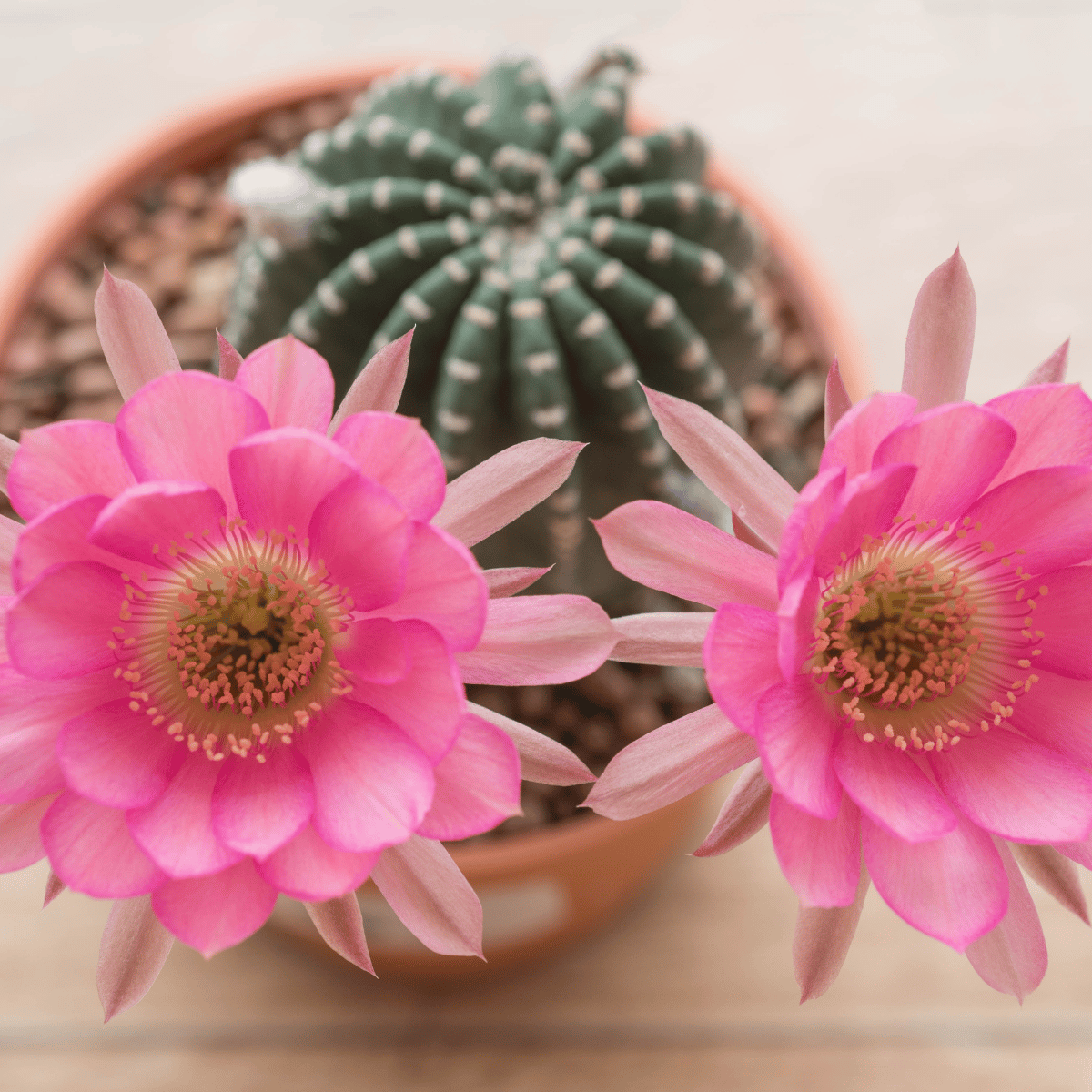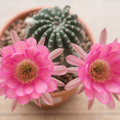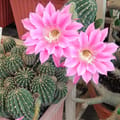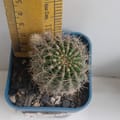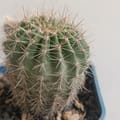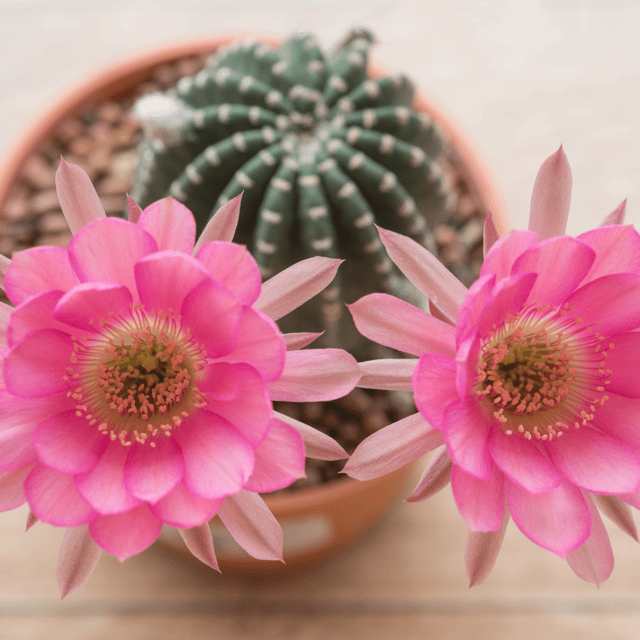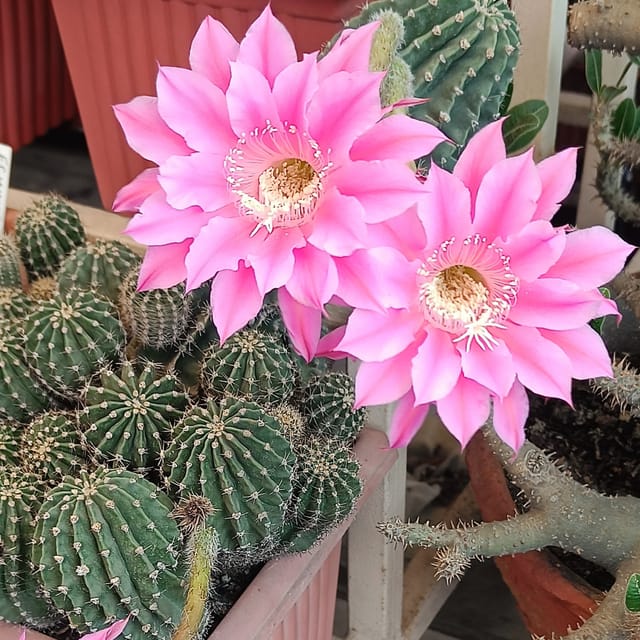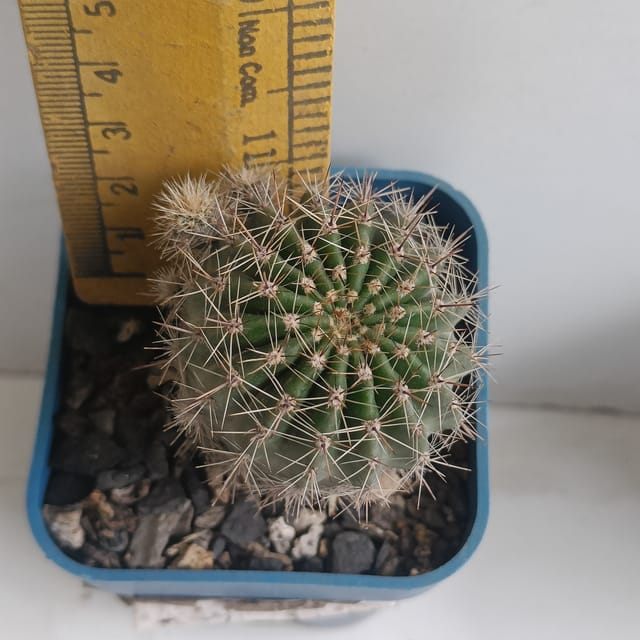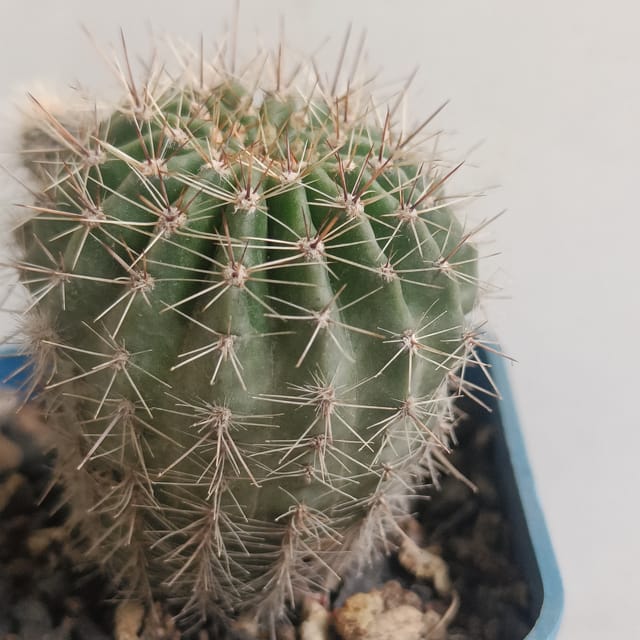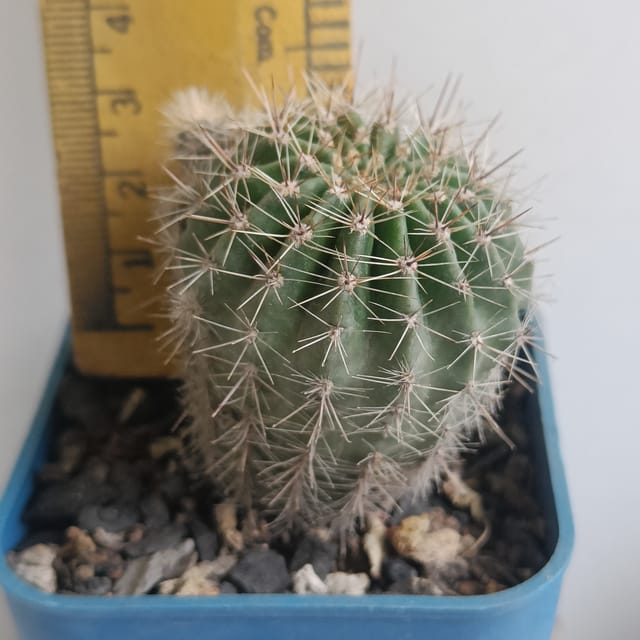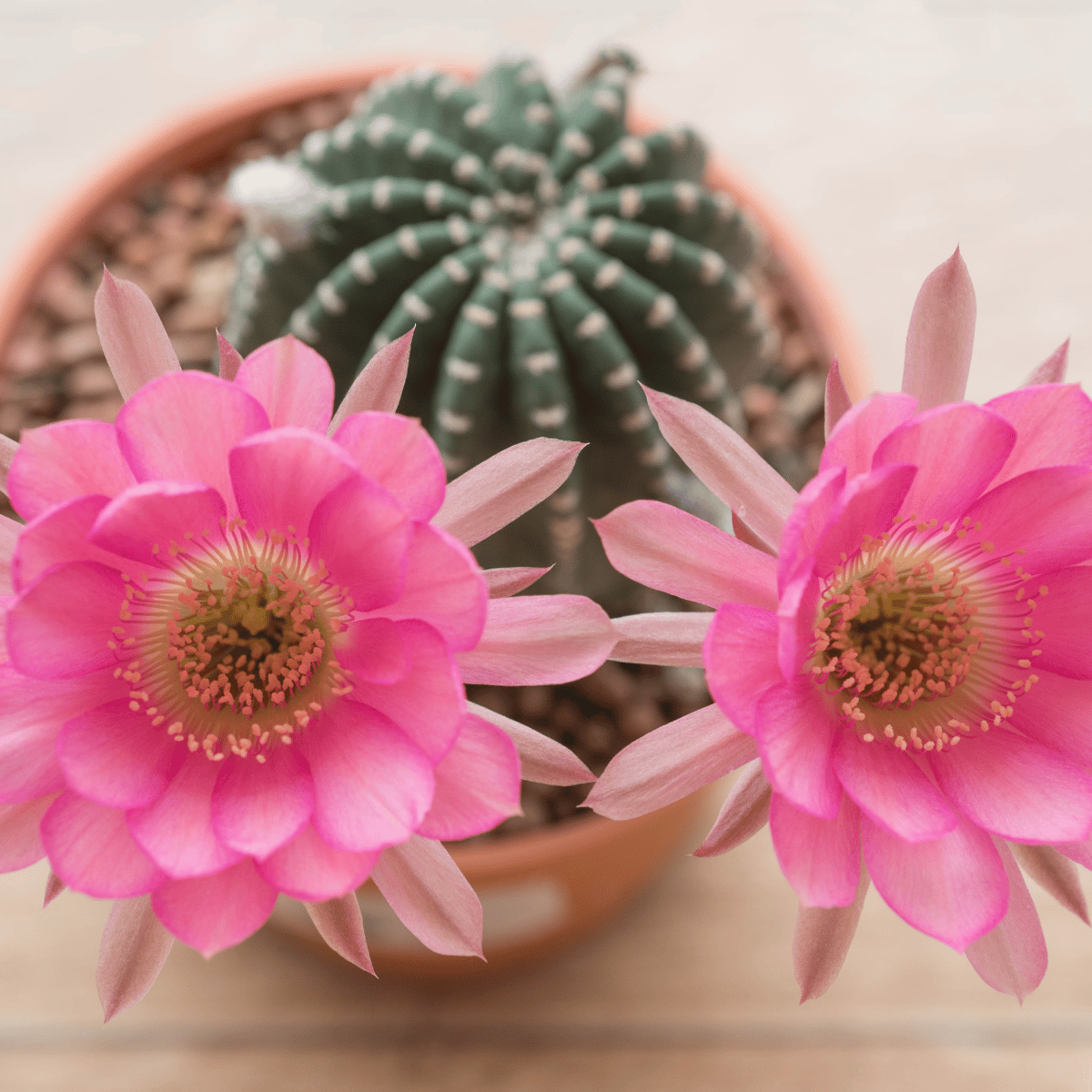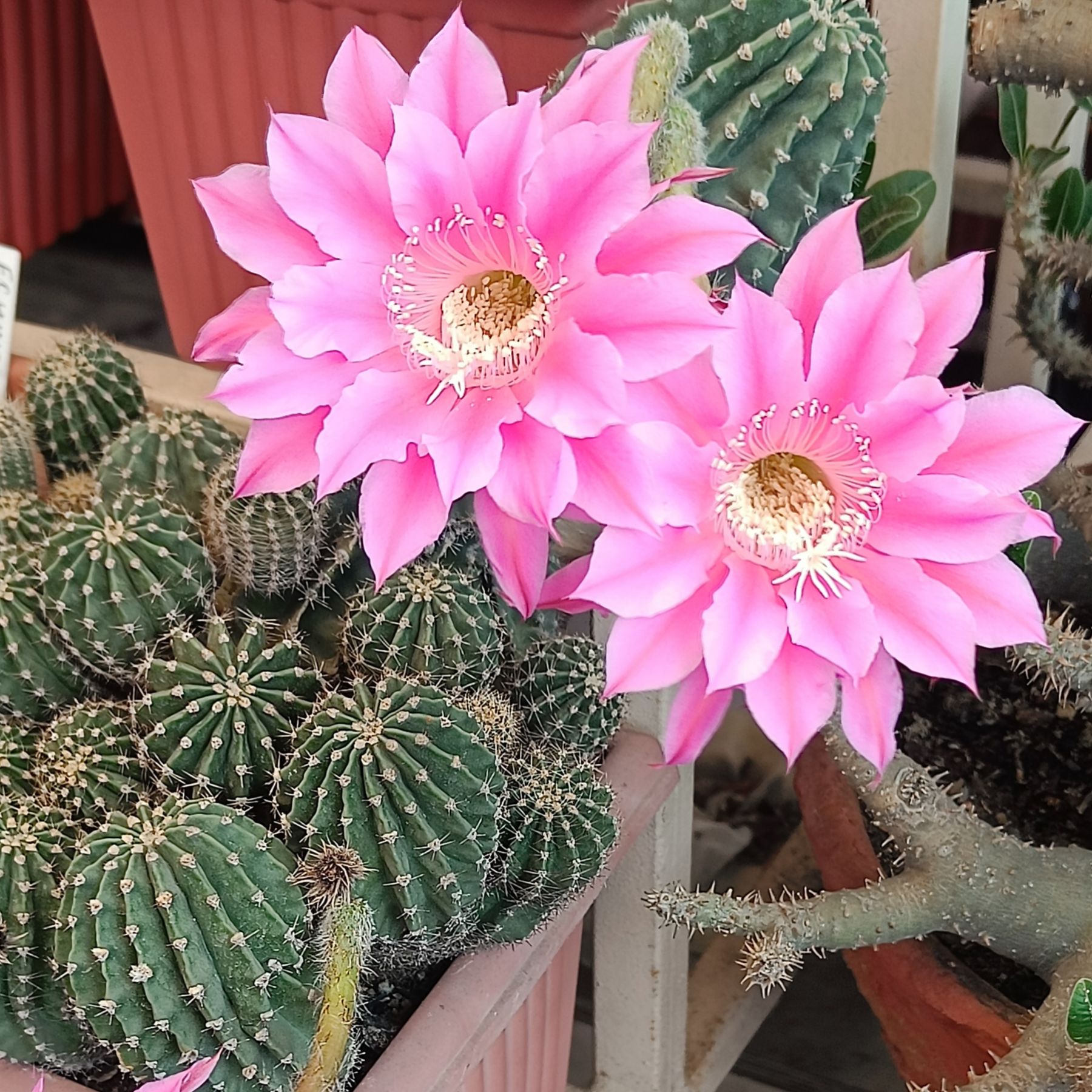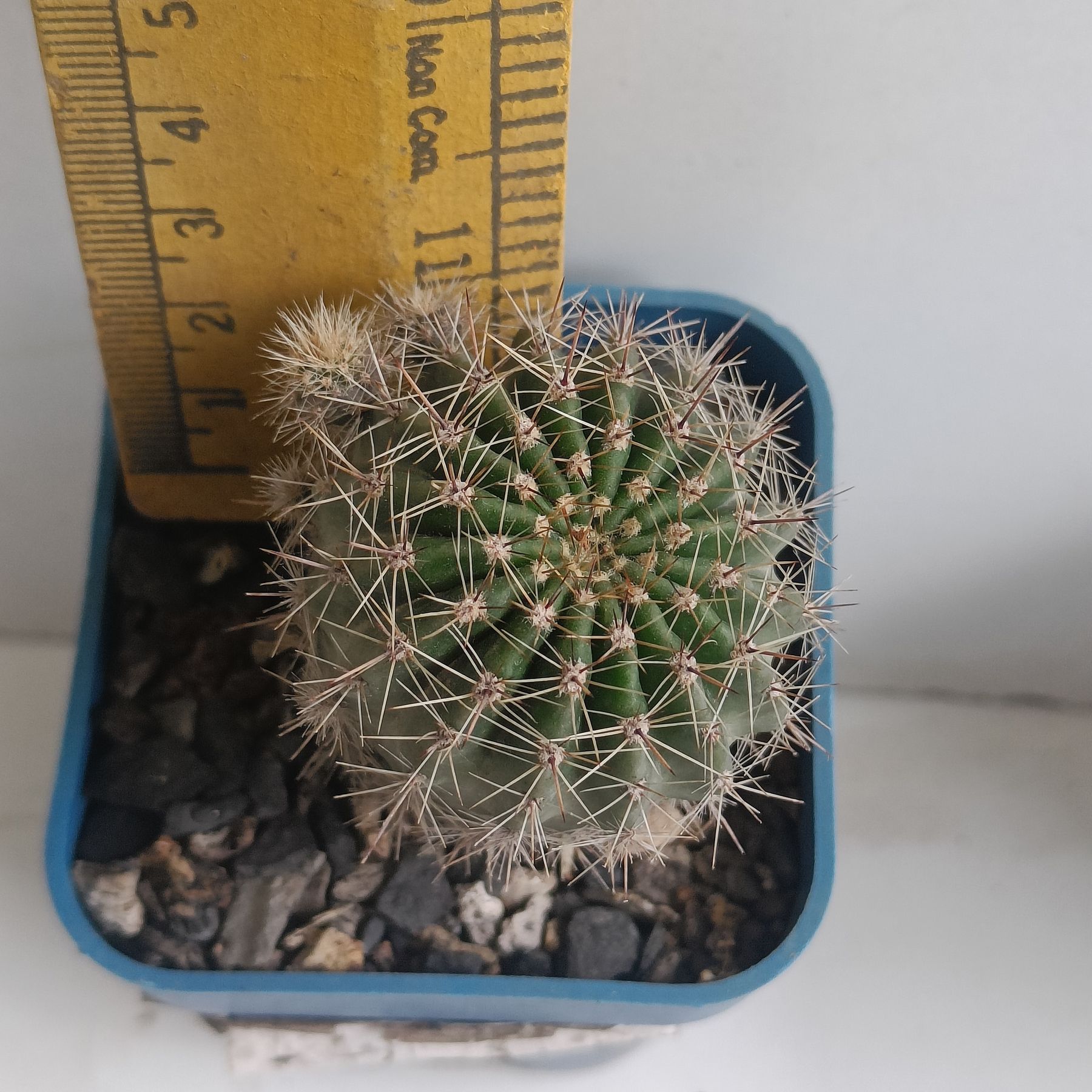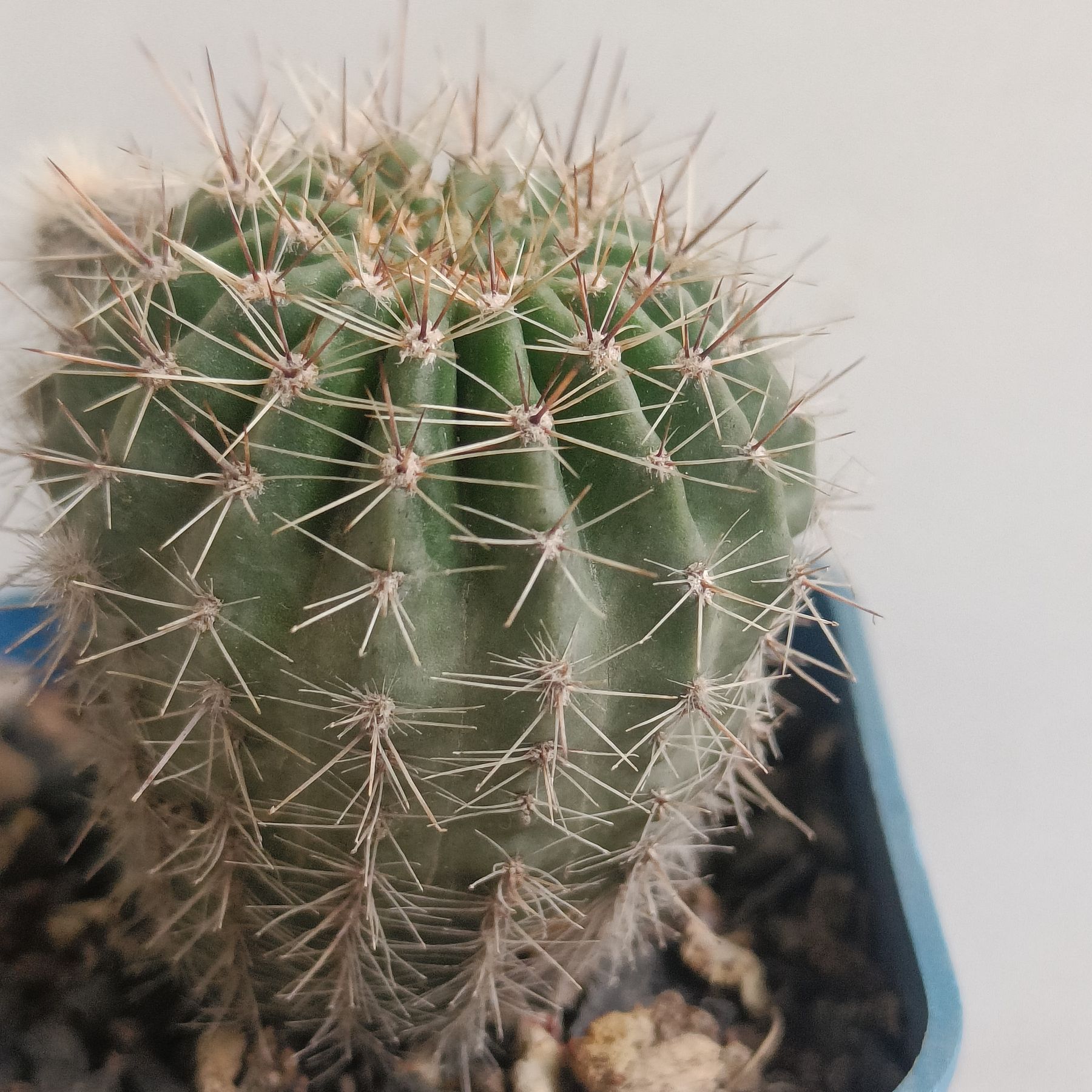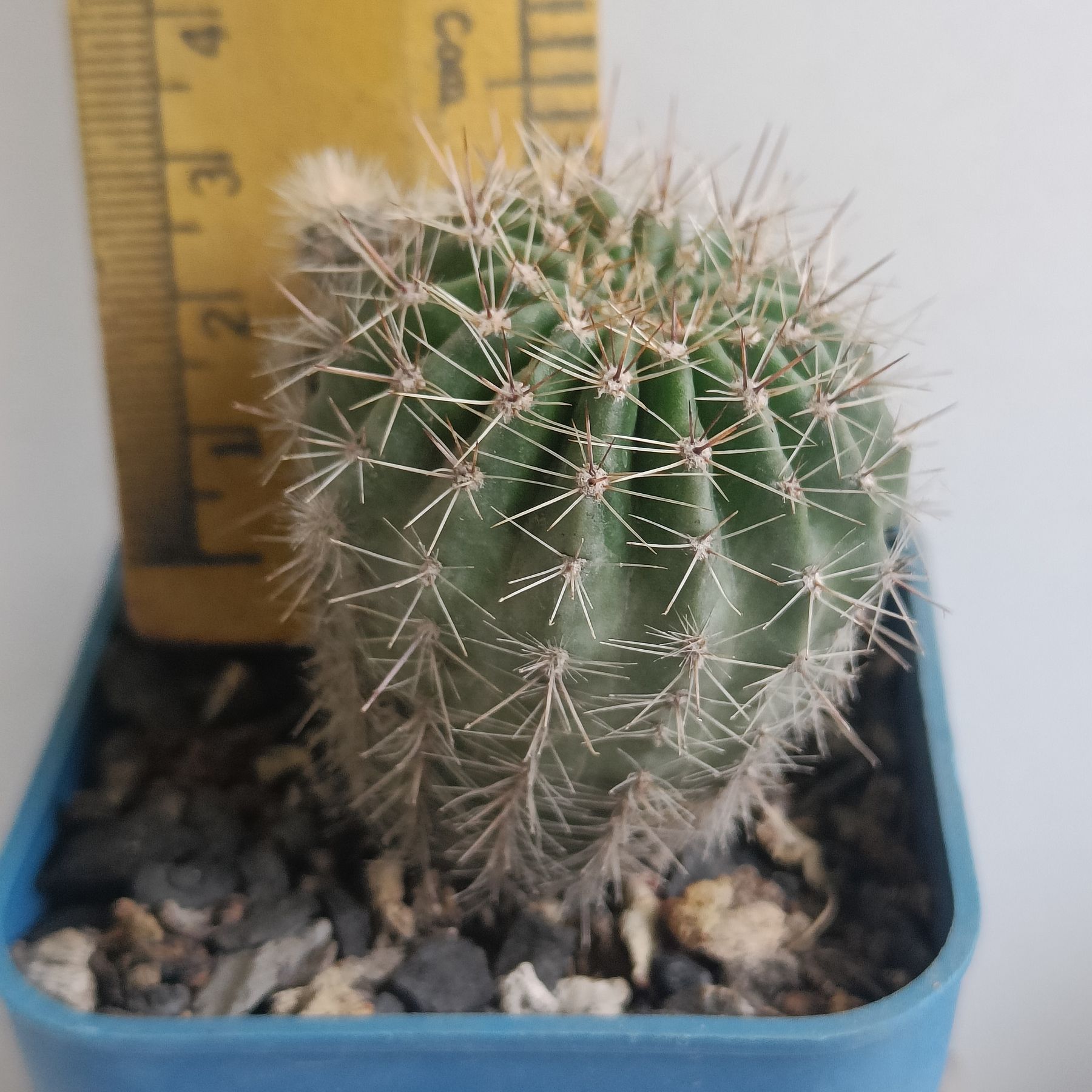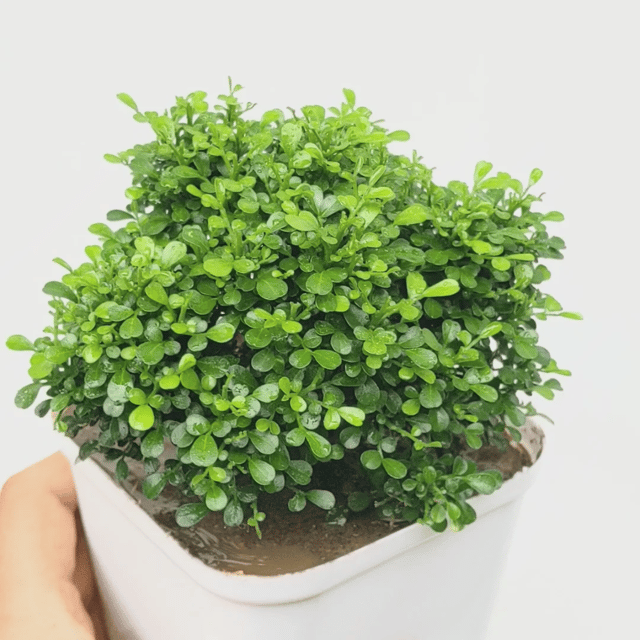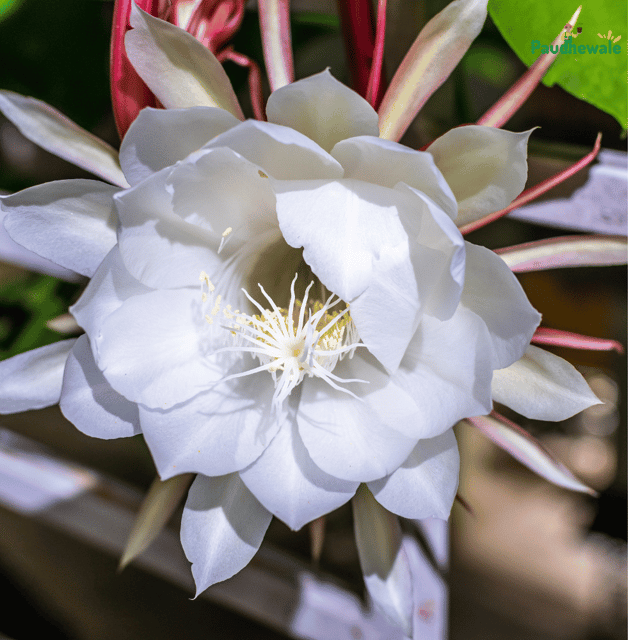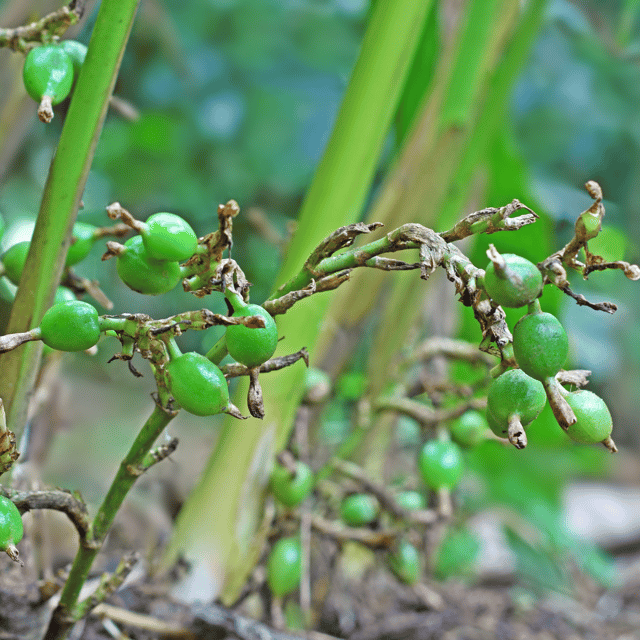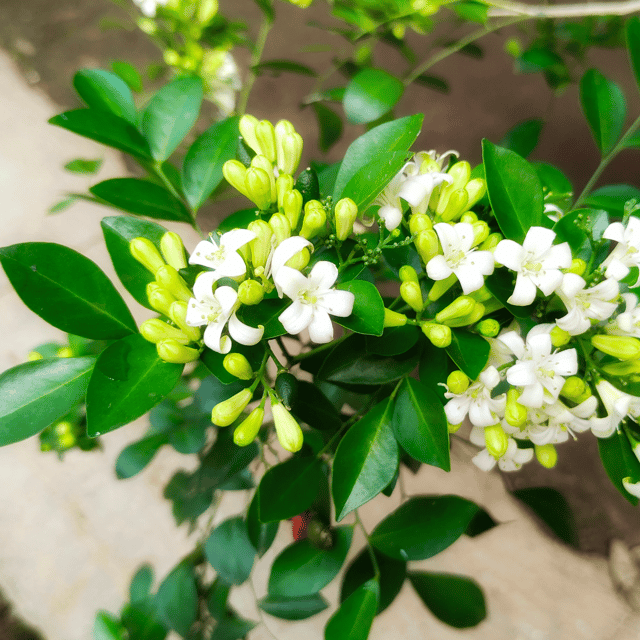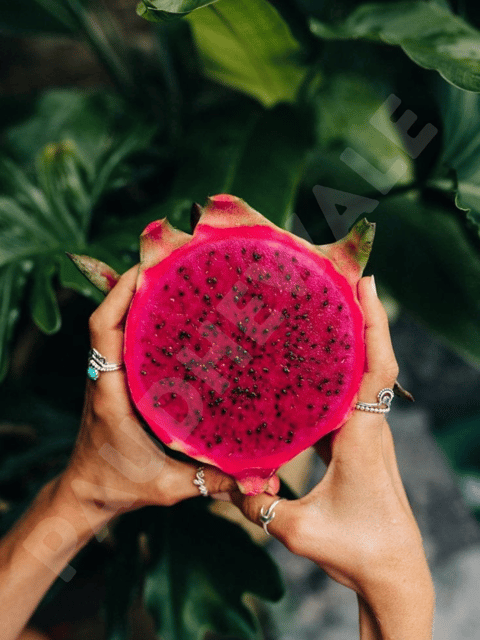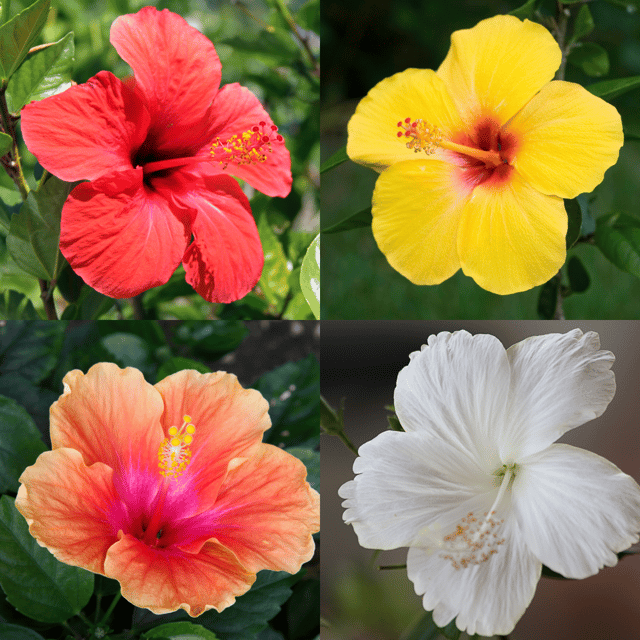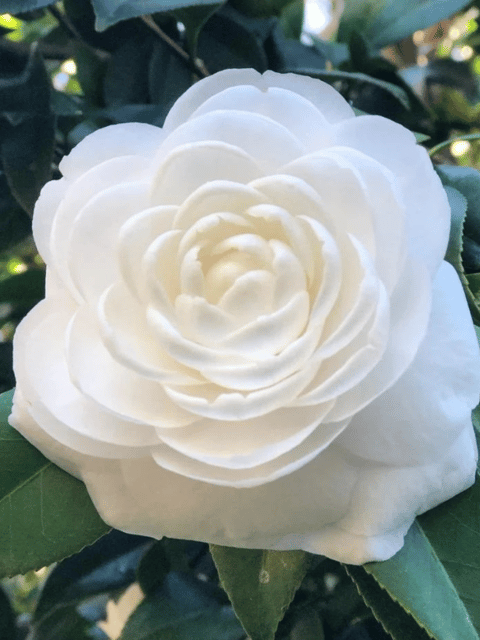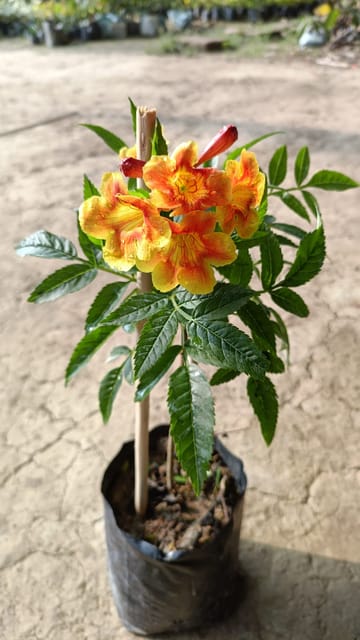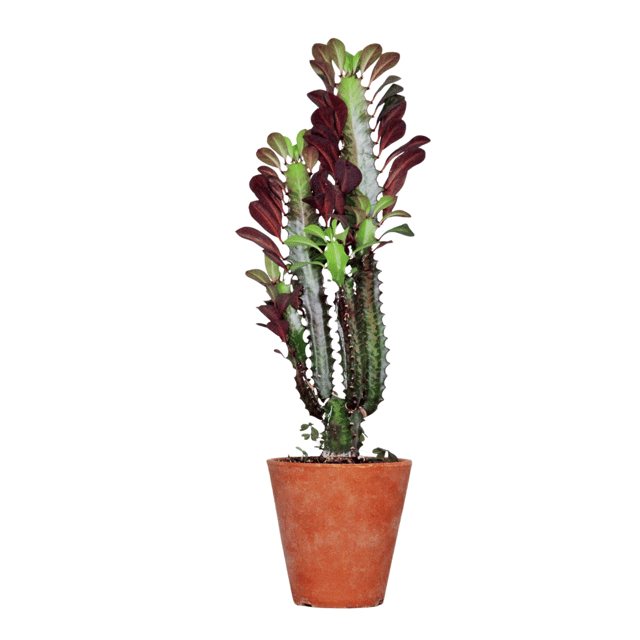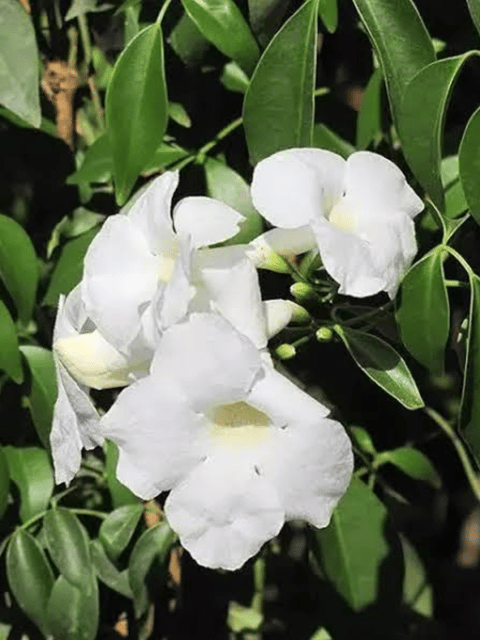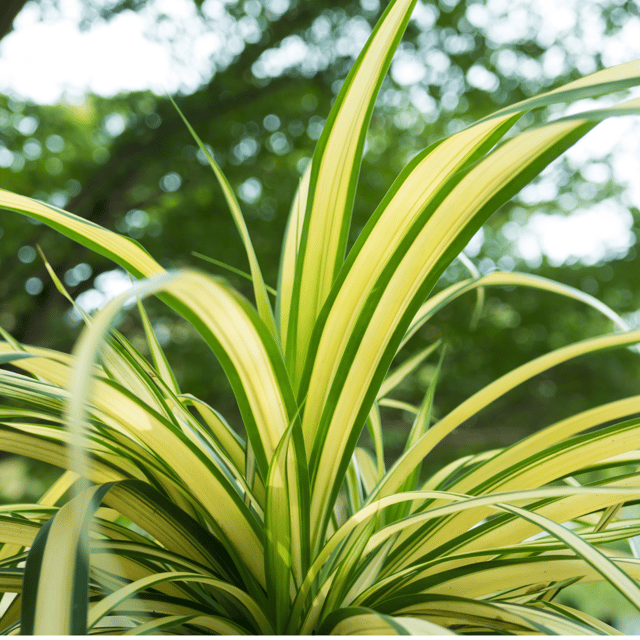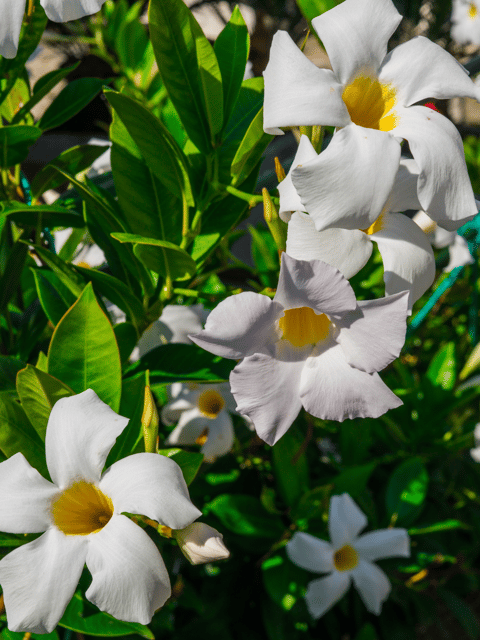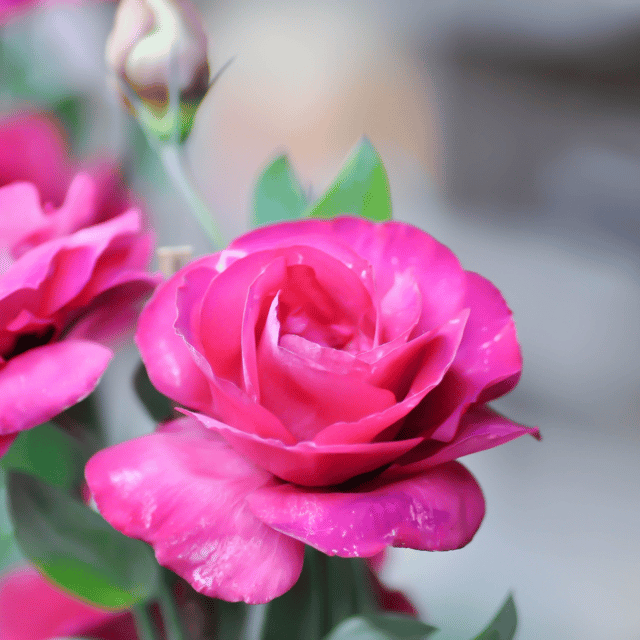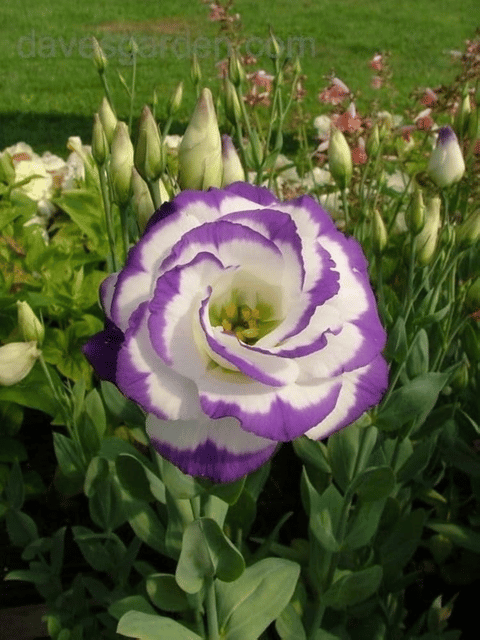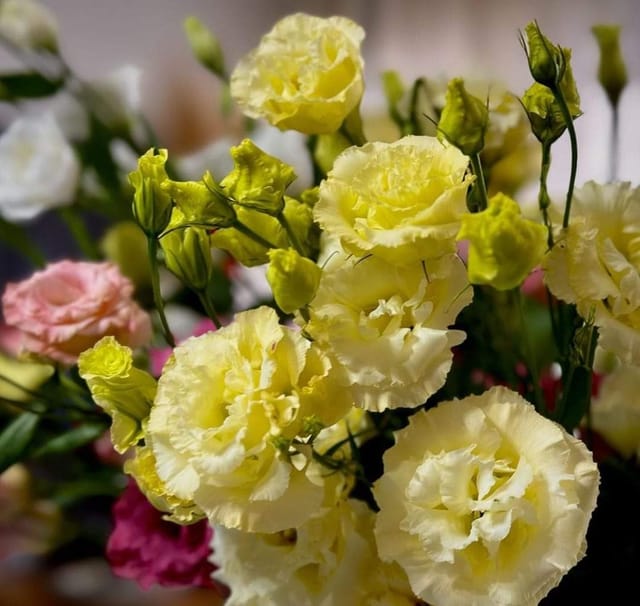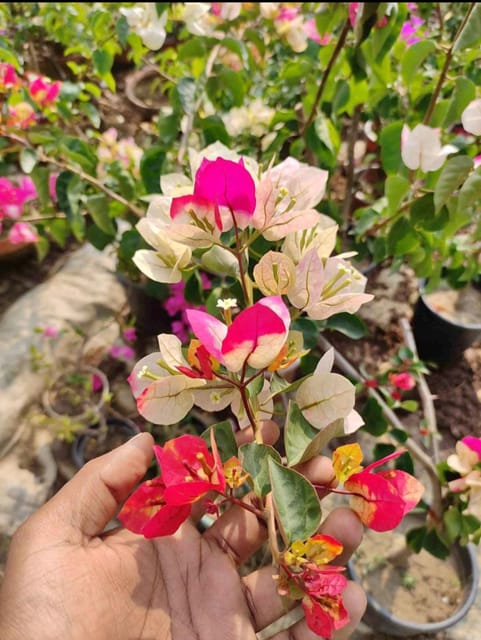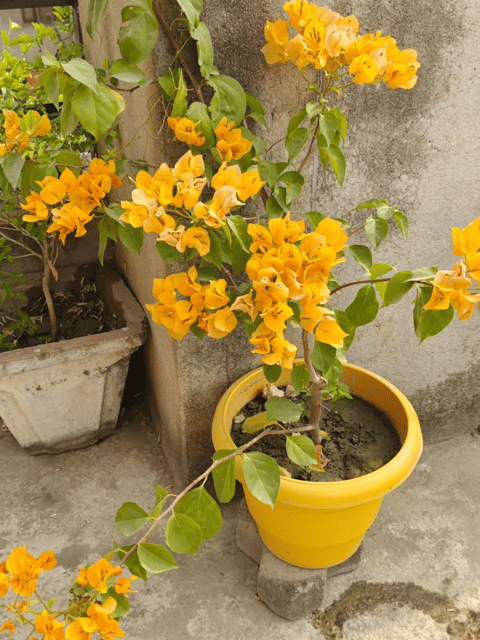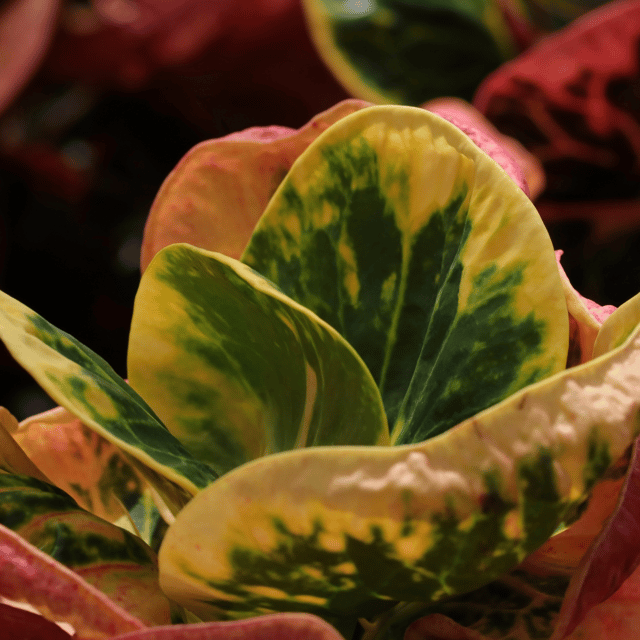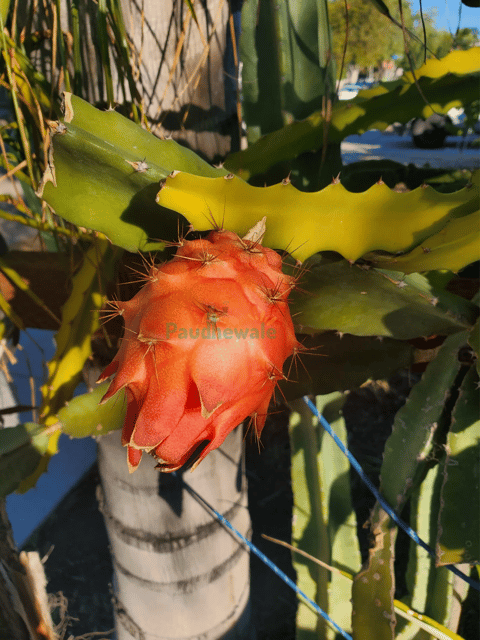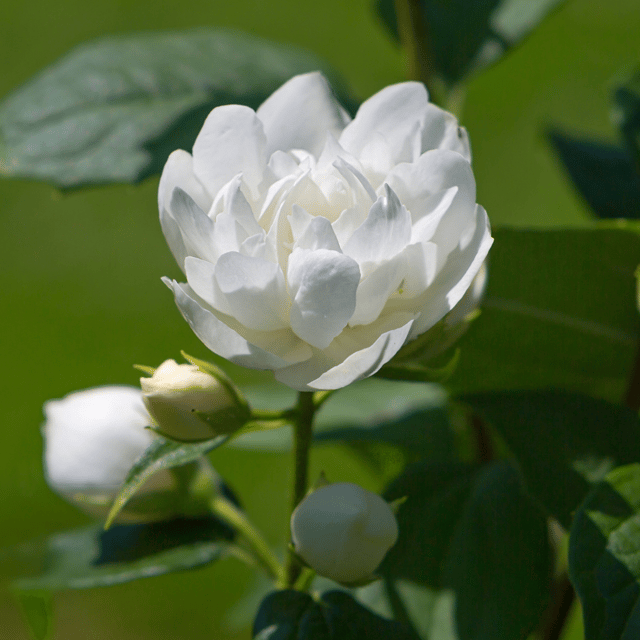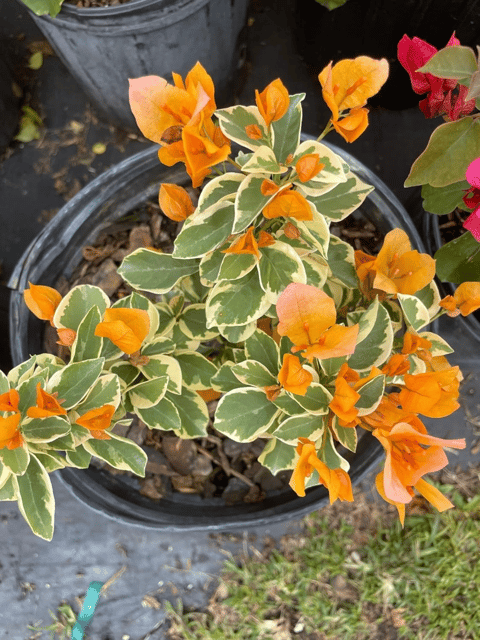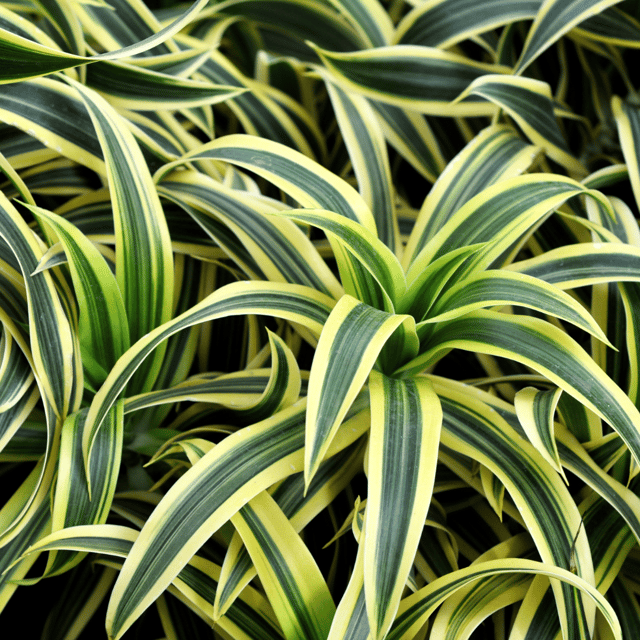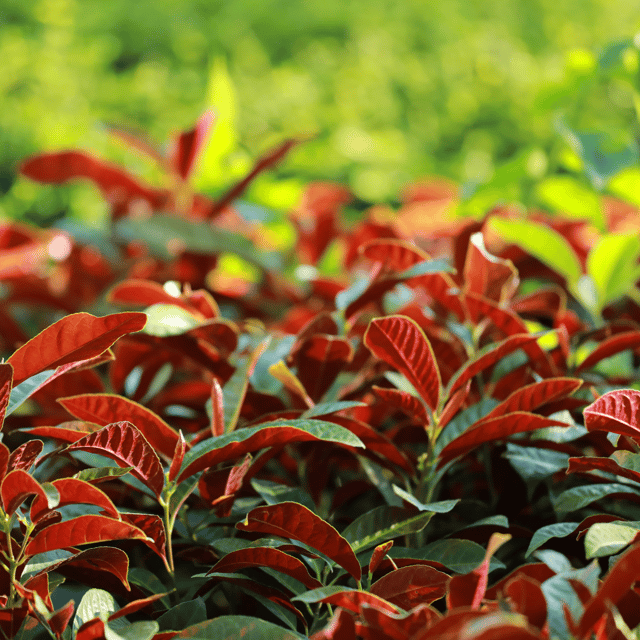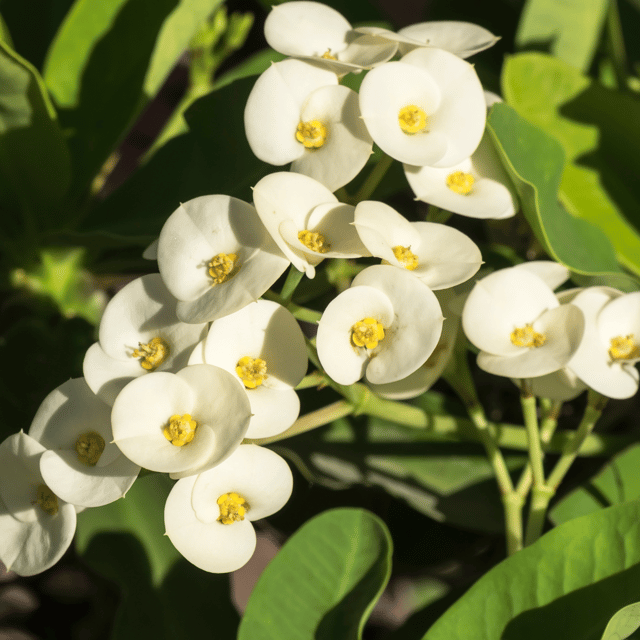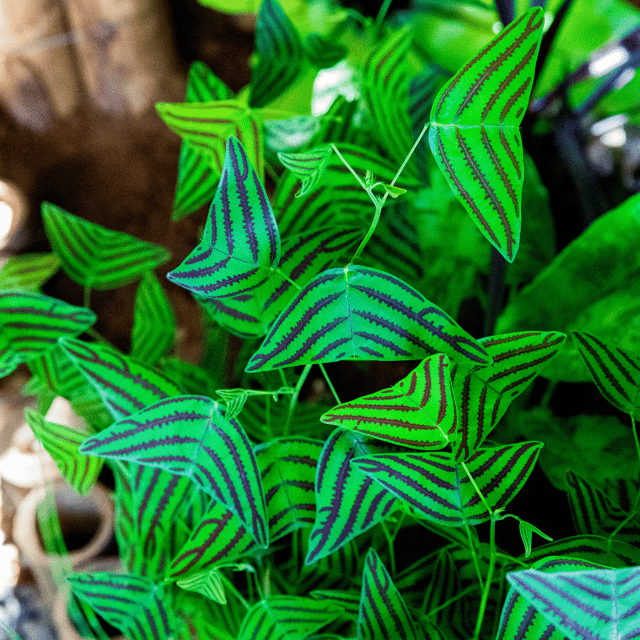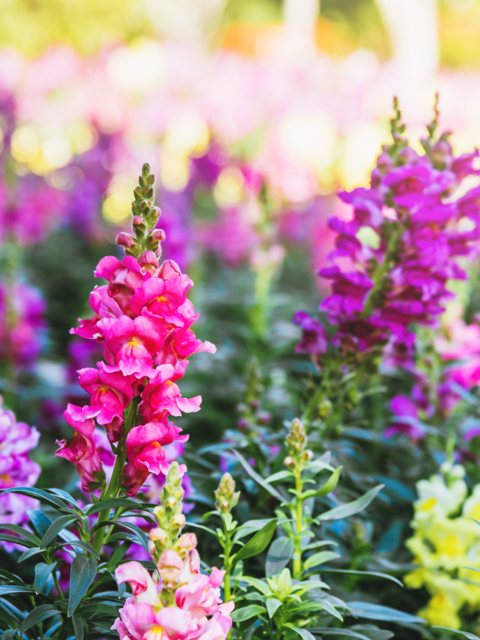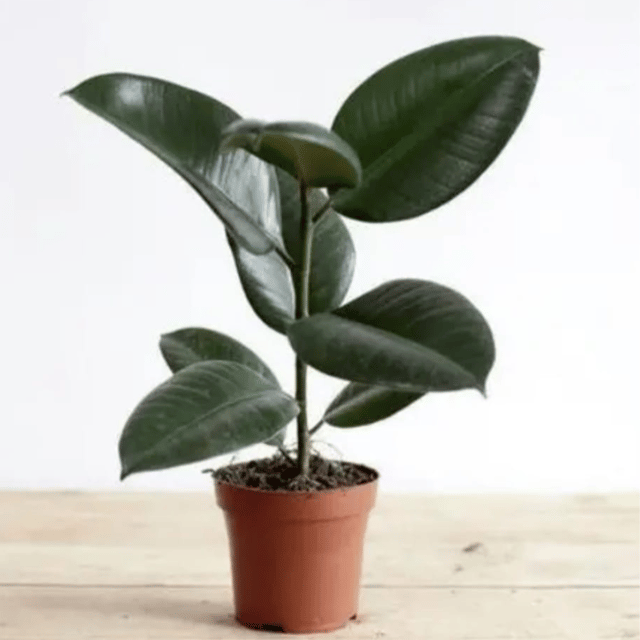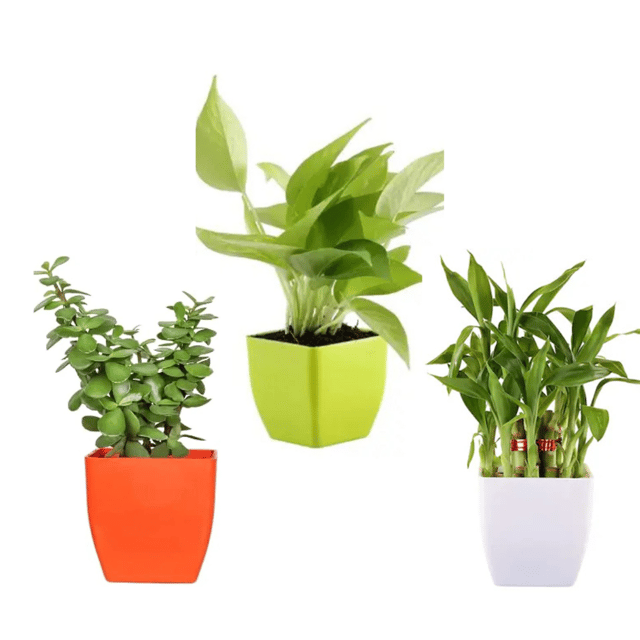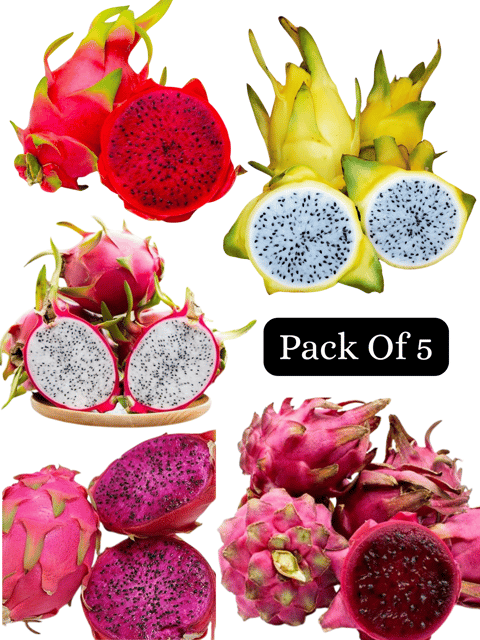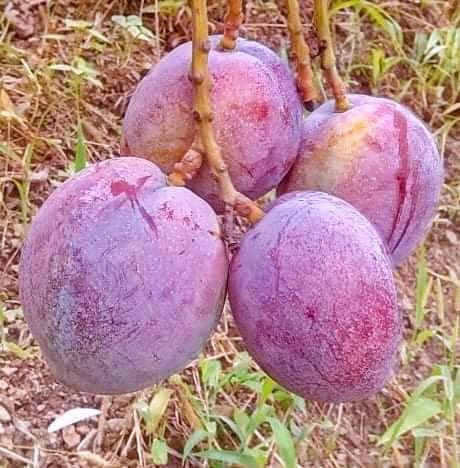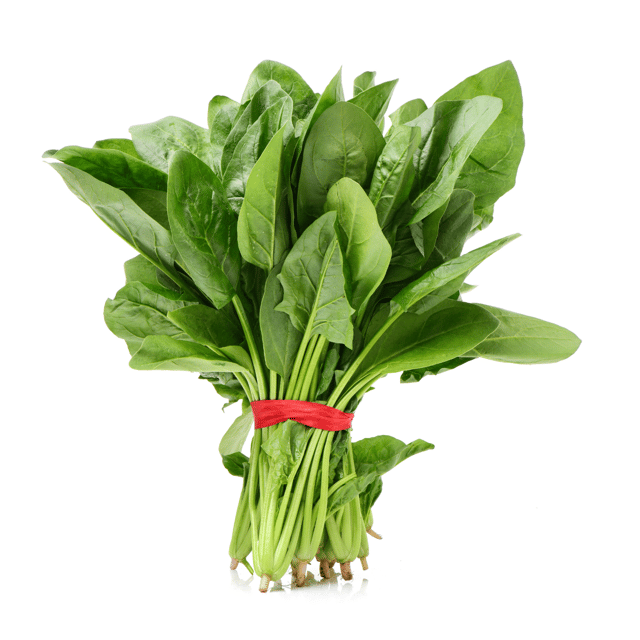Echinopsis hybrids are a diverse group of cacti that result from crossbreeding different species within the Echinopsis genus or related genera. These hybrids are popular among cactus enthusiasts for their varied and striking appearances, including unique flower colors, shapes, and sizes. Here’s a detailed look at Echinopsis hybrids:
Botanical Description:
Size and Shape: Echinopsis hybrids can vary widely in size and shape, depending on the parent species used in the hybridization. Generally, they are globular or cylindrical cacti with a relatively uniform appearance.
Ribs and Spines: The hybrids may exhibit a range of rib configurations and spine arrangements. They often have prominent, well-defined ribs with spines that can be short and straight or long and curved, and their colors can range from white to reddish-brown or yellow.
Flowers: One of the most notable features of Echinopsis hybrids is their flowers. They are known for their large, showy blooms, which can be quite spectacular. Flower colors vary greatly and can include shades of white, pink, red, orange, yellow, and even multi-colored blooms. Flowers typically open in the late afternoon or evening and may last for one or two days. Some hybrids are known for producing multiple blooms simultaneously or over an extended period.
Fruit: After flowering, Echinopsis hybrids produce small, typically rounded fruit that contains seeds. The fruit is usually less ornamental compared to the flowers but can be interesting for those who propagate from seed.
Cultivation:
Native Range: While Echinopsis hybrids themselves are not native to any specific location, their parent species are predominantly found in South America, ranging from Argentina to Bolivia and parts of Brazil.
Soil: They require well-draining soil, ideally a cactus mix or a blend with sand and perlite to ensure proper drainage and prevent root rot.
Watering: During the growing season (spring and summer), water them moderately, allowing the soil to dry out between waterings. In winter, reduce watering to prevent waterlogging, as many Echinopsis hybrids go dormant during this time.
Light: Echinopsis hybrids thrive in bright, indirect light to full sun. In regions with intense sunlight, some shading during the hottest part of the day may be beneficial to prevent sunburn.
Temperature: They prefer temperatures ranging from 30-40 c (68-86°F) during the growing season. While they can tolerate cooler temperatures in winter, they should be protected from frost.
Fertilizing: Feed them with a balanced, diluted cactus fertilizer during the growing season to encourage healthy growth and flowering.
Propagation:
From Seeds: Echinopsis hybrids are often propagated from seeds. Sow the seeds in a well-draining soil mix, keep them warm, and maintain a slightly moist environment until germination. Seedlings should be handled carefully to avoid damage.
Offsets: Some hybrids may produce offsets or pups, which can be separated from the parent plant and planted in their own containers.
Common Issues:
Overwatering: Like all cacti, Echinopsis hybrids are susceptible to root rot if overwatered. Ensure pots have good drainage and avoid letting the plant sit in water.
Pests: Common pests include spider mites, mealybugs, and scale insects. Regular inspection and treatment with appropriate methods can help keep these pests under control.
Disease: Watch for signs of fungal or bacterial infections, which can cause discoloration or soft spots on the plant. Proper care and hygiene can minimize these risks.
Echinopsis hybrids are valued for their adaptability and the wide variety of forms and colors they offer. They make excellent additions to collections and can be quite rewarding with the right care.
